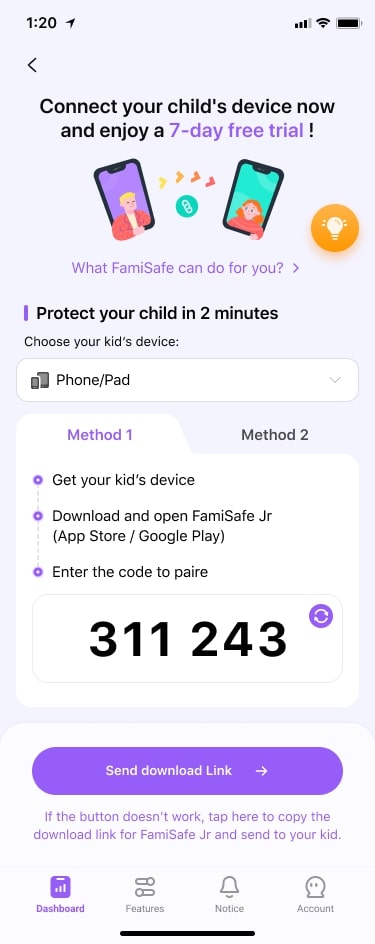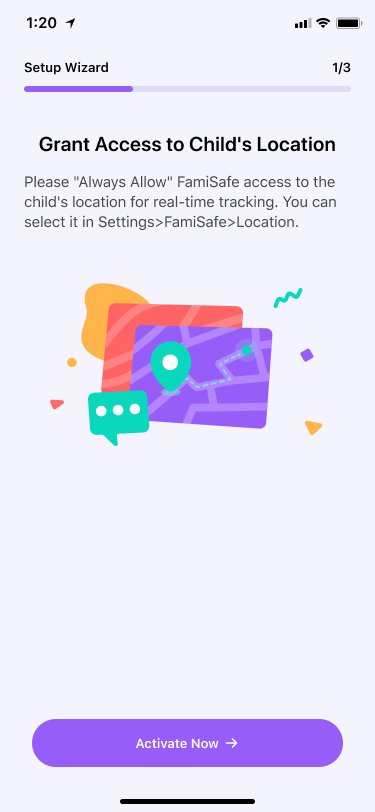Table of Content
Skibidi Toilet Syndrome - How To Protect Your Kids

Have you ever heard your child humming a strangely catchy song about toilets? Or maybe you've seen them spending a lot of time watching unusual cartoon videos with singing bathroom items? If this sounds familiar, you could be experiencing a unique trend affecting younger kids - Skibidi toilet syndrome.
In this article, we'll take a closer look at Skibidi toilet syndrome, explaining what it is, why it's attracting our children, and, most importantly, how we can help protect our kids from any possible negative impacts.
Whether you're a worried parent or just interested in this popular trend, keep reading to learn all about Skibidi Toilet Syndrome treatment in the digital age.
Part 1: What is Skibidi Toilet Syndrome?
Skibidi toilet syndrome is a casual term that refers to a strong fascination with a series of cartoon videos that show talking toilets and bathroom items. These videos started on websites like YouTube and TikTok and usually have strange, silly stories with fun electronic songs.
This syndrome mostly affects kids and teenagers, but some grown-ups also find themselves liking these videos a lot. People with this syndrome really enjoy watching and thinking about Skibidi toilet videos, sometimes more than doing other things they usually like.
People with Skibidi toilet syndrome might show these behaviors:
- Excessive watching: They spend too much time watching Skibidi toilet videos, sometimes ignoring other tasks or duties.
- Frequent talking: They often talk about or mention the characters and stories from the Skibidi toilet.
- Trouble stopping: They find it hard to stop watching or reduce their exposure to Skibidi toilet content, even when their parents or guardians ask them to.
How To Recognize The Signs Of Skibidi Toilet Syndrome

Identifying the early signs of Skibidi toilet syndrome can assist parents and caregivers in tackling the issue before it worsens. Here are some important signs to look out for:
| No. | Early Sign | Description of Symptom |
| 1. | Increased device requests | Frequently asks to use devices or watch videos more than usual |
| 2. | Humming Skibidi tunes | Often hums or sings songs related to Skibidi toilet videos |
| 3. | Skibidi-themed artwork | Child draws or creates art featuring Skibidi toilet characters |
| 4. | Using Skibidi phrases | Kids use Skibidi toilet catchphrases or sound effects in everyday conversation |
| 5. | Anxiety when disconnected | Becomes upset or anxious when unable to access Skibidi toilet content |
| 6. | Loss of other interests | Child loses interest in previously enjoyed activities or hobbies |
| 7. | Fixation on Skibidi topics | Faces difficulty engaging in conversations or activities unrelated to the Skibidi toilet |
| 8. | Seeking Skibidi merchandise | Child asks for or seeks out Skibidi toilet-themed products or merchandise |
By recognizing these signs early, parents and caregivers can take steps to manage the situation effectively.
Part 2: Why Are Kids Obsessed with Skibidi Toilet?
Although Skibidi toilet syndrome isn't officially recognized as a medical condition, it's clear that some kids get interested in and might even become hooked on Skibidi toilet videos. It's not certain if this should be called a "syndrome," but it's clear that it affects how kids act and their everyday lives.
Several reasons make Skibidi toilet videos popular with kids:
- New and funny: The strange and silly parts of the videos catch kids' interest and make them think.
- Same things over and over: The same music and pictures can be nice and fun for little kids.
- Funny jokes: The silly jokes about toilets and funny situations make kids laugh.
- Everyone's watching: The videos are very popular, so kids feel like they're part of something everyone is doing.
- Videos show up a lot: Websites often suggest these videos, so kids see them more and keep watching.
Even though some people think kids watching Skibidi toilet videos is okay or even funny, it's important to think about how it might affect kids' growth and happiness.
Part 3: How to Cure Skibidi Toilet Syndrome: Use Wondershare FamiSafe

Although there isn't a specific medical solution for Skibidi toilet syndrome, there are ways parents and caregivers can help manage the problem:
| No. | Strategy | Description |
| 1. | Set limits on screen time | Establish rules for device usage and screen time, particularly for Skibidi toilet videos |
| 2. | Promote other activities | Encourage participation in various hobbies and offline activities |
| 3. | Talk openly | Discuss online content types and teach critical thinking about media consumption |
| 4. | Reduce access gradually | Slowly decrease time spent on Skibidi toilet content to avoid sudden changes |
| 5. | Give rewards | Offer praise and incentives for screen-free activities and balanced lifestyle choices |
| 6. | Make a family media plan | Develop a comprehensive plan for family media use, including healthy habits and expectations |
| 7. | Use parental controls | Implement tools to manage and monitor children's online activities |
Wondering how to get rid of Skibidi toilet syndrome? One particularly effective tool for managing Skibidi toilet syndrome is Wondershare FamiSafe, a comprehensive parental control application designed to help parents protect their children in the digital age.
Wondershare FamiSafe provides several tools that can help in dealing with the issue of Skibidi toilet syndrome:
- Screen Time Control: Set daily limits on device usage to gradually reduce time spent watching Skibidi toilet videos. For example, start with a 30-minute daily limit and slowly decrease it over time.
- App Blocker: Restrict access to apps like YouTube or TikTok that host Skibidi toilet content. Block these apps during certain hours or completely to help break the addiction cycle.
- Content Filtering: Create custom filters to block Skibidi toilet-related keywords, channels, or video titles. This prevents exposure to existing content and the discovery of new related videos.
- Browser History: Monitor your child's online activities to understand their Skibidi toilet content consumption patterns. Use this information to adjust your intervention strategies as needed.
Using these tools, parents can effectively control and monitor their children's online activities related to Skibidi toilet syndrome.
Here are the simple steps to use Wondershare FamiSafe to restrict your kids from watching Skibidi Toilet content on YouTube.
Step 1: Download the FamiSafe app from your device's app store (Android or iOS).

Step 2: Take a quick tour of FamiSafe's new features. Sign up for a Wondershare ID or log in using Apple, Google, or Facebook.

Step 3: Choose the parent option and connect to your child's device using a QR code or pairing code.

Step 4: After pairing and getting permission on your child's device, use the setup wizard to establish basic parental controls.

Part 4: Alternative Approaches to Cure Skibidi Toilet Syndrome
Instead of simply stopping your child from watching Skibidi toilet videos, you can help them focus on more beneficial creative pursuits for skibidi toilet syndrome treatment:
- Inspire your kids to write their own stories or create animations, possibly incorporating toilet-themed characters in ways that are educational or significant.
- Guide them in making stop-motion animations, allowing them to produce short films using items found at home.
- Introduce them to music creation tools so they can compose original tunes inspired by the catchy Skibidi toilet tunes.
- Organize frequent family outings to parks, nature preserves, or nearby attractions.
Conclusion
Skibidi toilet syndrome, although not officially recognized as a medical condition, is a genuine issue for many parents in our current digital era. The strange and engaging Skibidi toilet videos have attracted children globally, sometimes causing them to spend too much time in front of screens and potentially affecting their development.
In this article, we've discussed how Skibidi toilet syndrome can have substantial effects, influencing areas like sleep, physical exercise, social abilities, and schoolwork.
Nonetheless, with knowledge, insight, and appropriate strategies, parents can successfully handle this situation and help their kids develop a better balance with digital content.
Is Skibidi toilet syndrome real?
While not a medical condition, Skibidi toilet syndrome describes a real obsession some kids have with Skibidi toilet videos, which can affect their behavior and daily life.
How can I tell if my child has Skibidi toilet syndrome?
Look for signs like constantly watching Skibidi videos, talking about them all the time, singing the songs, and getting upset when they can't watch them.
Can Skibidi toilet syndrome harm my child?
Too much time watching these videos can lead to less sleep, less physical activity, and less time for other important activities, which may affect your child's health and development.
How can I help my child overcome Skibidi toilet syndrome?
Try limiting screen time, encouraging other activities, using parental control apps like Wondershare FamiSafe, and talking with your child about healthy media habits.


